02 Oct The top 5 ballet ball exercises
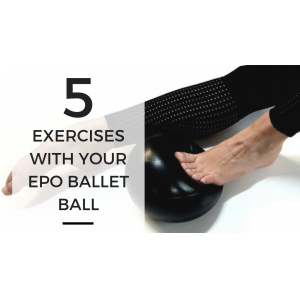
Dancers all know how important strength and control of the foot and ankle is in executing excellent technique. We see many dancers in our clinic and all are at different stages in their foot and ankle strength and control. When you have mastered the foundational exercises, the En Pointe Orthotics Ballet Ball is a great way to add resistance for increased challenge so that you can work for stronger, more controlled feet with a beautiful line.
- Point and flex
Benefits: This exercise is great for working towards a stronger pointed foot which is essential for all dancers in their technique as well as to keep their feet safe from overuse injuries! We are working for correct alignment of the ankle through demi-pointe and point, correct use and alignment of the toes, and activation, control and strengthening of the arch intrinsic muscles separate to the larger muscles that move the ankle.
How: Place the ball against a wall, sitting tall with your legs outstretched and flexed feet. Pull up through your thigh to straighten but not hyperextend the knee. From flex, slowly move into demi-pointe making sure that you keep your shin, the centre of your ankle and your second toe in line, no sickling or fishing. Spread the toes and keep them long and straight as you point into the ball without lifting your heel off the floor. It is important you don’t let your toes crunch, curl, claw or grip into the ball so start with a small amount of point that you can control and as you get stronger you will be able to point further with correct technique. Now slowly move back through demi-pointe and return to a flexed foot, make sure you haven’t lost your tall posture! If you feel any cramping in the foot, relax and gently massage the muscle before trying again. This usually means that the muscle is a little weak and is working very hard to achieve the movement so as you get stronger this should settle down. Repeat 15-20 times.



- Toe swapping
Benefits: Make sure you have mastered toe swapping on the floor with no resistance before trying with the ball, using the ball then adds more challenge to the strength of the muscles and control of ankle alignment. This exercise is great for isolation of the small muscles that move the toes, and big toe movement and control- all especially important if you are hoping to get your pointe shoes or are already dancing en pointe!
How: Place the ball against the wall, sitting tall with your leg outstretched and foot relaxed against the ball in a neutral position. The centre of the ball should be behind the ball of your foot. Push the big toe down into the ball whilst lifting the other 4 toes away. You should feel a muscle in your arch engage. Then swap and push the 4 toes down but lift the big toe off. It is important to keep the ankle still and straight, don’t let your foot and ankle roll side to side with your toes. Make sure the toes are long and straight when they press into the ball and there should be no curling in the knuckles. If you get any cramping, try gently massaging the foot then continue. Repeat 15-20 times.
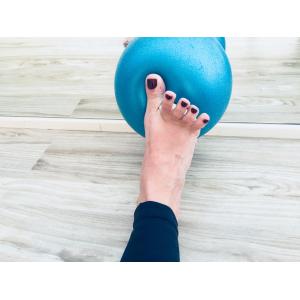
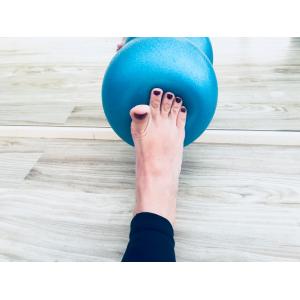
- Inner calf activation
Benefit: The inside calf is often forgotten, as we are usually a lot stronger in our outer calf muscle. We need them to be working together to prevent imbalance that leads to poor ankle and foot alignment. If you are dancing en pointe, activation and correct use of this muscle is important.
How: Sitting in the same position as the demi to point exercise, watching that you maintain a tall long posture throughout and don’t slouch. Start with the foot flexed and slowly move into demi-pointe watching or feeling the inside of the calf muscle turn on right from the beginning of the movement. Thinking about ‘lifting your heel up’ away from the ball instead of pointing your toe down is a nice way to help get the muscle to turn on. This exercise can take some practice but once you learn how to tell the nerves to turn the muscle on it will start to become more natural. Repeat 15-20 times.


- Ankle strengthening
Benefit: It’s not uncommon you hear your ballet teacher yelling the words “stop sickling!” and sometimes you didn’t even realise you were doing it or how to correct it. Especially en pointe, if the leg and ankle isn’t stacked properly in line then you can put yourself at risk of injury. It’s also common that dancers may roll or sprain an ankle and have ongoing difficulties with balance and strength in that foot. This exercise is a great starting point for helping improve the strength along the outer ankle for better stability.
How: Sit side-on to the wall with the closest leg out straight and the ball next to the toes. Start in point with a straight leg, pulled up through the knees. Think of pushing the little toe into the ball by sweeping the foot to the side. Make sure the leg doesn’t roll with it and the movement just comes from the ankle. Now in flex, think of a similar movement to a windscreen wiper where the foot sweeps outwards and pushes into the ball.

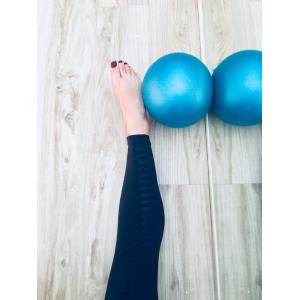
- Rises with the ball
Benefits: This exercise is a great addition to your calf strength exercises by helping to activate tibialis posterior, a muscle that attaches in the arch and helps with lifting the arch high into the maximum demi-pointe range. It also works in controlling your ankle alignment when balancing on demi-pointe or en pointe.
How: Place the ball between the bony part of the inner ankles with your feet in parallel. You want to squeeze the ball between the ankle bones, not the heels, and continue to squeeze as you rise up onto demi-pointe and slowly back down. Take 4 counts to reach the top of your rise and 4 counts to lower. Make sure to not squeeze with your heels, turn the feet out or roll the ankles out, and maintain the pressure throughout the entire movement.
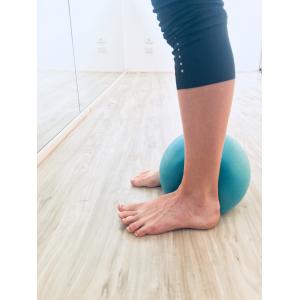
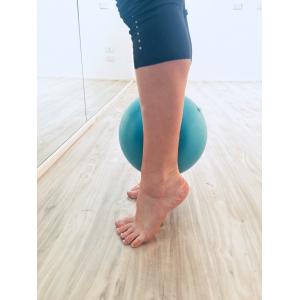
Buy your ballet ball here
This article was kindly written for En Pointe Orthotics by Dance Physiotherapist Sarah Kiely from The Living Well Studio on the Gold Coast.
You can get in touch with Sarah here.

Sarah Kiely – Dance Physiotherapist

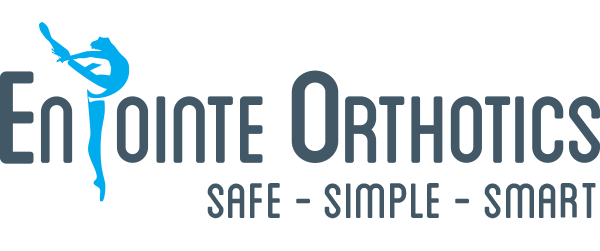

Sorry, the comment form is closed at this time.